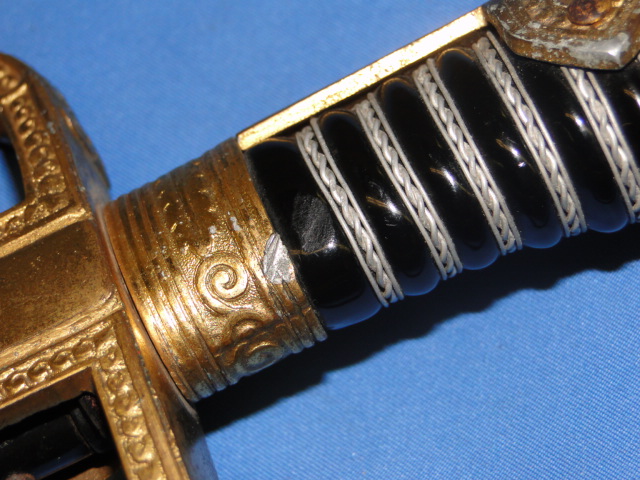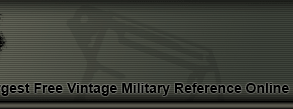WWII German Army Officer's Sword - Aluminum version
The German Army was made part of the Wehrmacht in May 1935 with the passing of the "Law for the Reconstruction of
the National Defence Forces". Initially, the Army was expanded to 21 divisional-sized units and smaller formations.
Between 1935 and 1945 this force grew to consist of hundreds of divisions and thousands of smaller supporting units.
Between 1939 and 1945 close to 16 million served in the Army.
Army soldiers were allowed to wear a sword as a symbol of status. The sword was worn with the dress uniform at ]
special occassions such as dinners, parades, weddings, etc.

The design of the sword consisted of a "dove" head pommel with a metal cover which extended as part of the
handguard, which ended into a simple cross guard. The handle could be made of multiple
materials . It was wrapped with silver
wire.

The blade was of single edge design. It is chromed and not sharpened, as this was not necessary in view that
the sword was not designed for combat purposes.

|
This page is a recognition and identification guide for German bayonets. Multiple
detailed photos of a specific sample are provided. Descriptions point out specific
points that should be noted.
One of the most commonly asked questions is "How much is my German bayonet worth?".
A price guide is included here to address this question. The value of the Nazi bayonets is
reviewed over a period of several years. A trend can be observed. The present worth
of the police sword in the collector's market is illustrated.
This service is provided free of charge to the visitor/enthusiast courtesy of
MilitaryItems.com,
a company dedicated
to the preservation of military history and to providing quality military antiques and
collectibles to museums, institutions and the general public.
|
|

This sword is the aluminum version. It is of late war production as normal construction materials were
runing scarce.
The back of the handle is adorned with multiple elegant patterns. The photo below shows a close up
view of the wire wrapping employed in the handle.

The front of the crossguard has an extension which displays the army eagle. All fittings for this
sword are painted in gold.


This sword was manufactured by the Eickhorn company, which was a well known manufacturer of edge weapons.
The maker's logo can be seen at the base of the blade. Due to the design of the crossguard, part of the
logo is covered.
An additional marking is found in the bottom side of the crossguard. It reads "Ges gesch", which is the
equivalent to Pattent Pending.


The scabbard is of metal construction. It is painted black. very simple design. The chape had a small
piece that extended into a circular pattern.
A single suspension ring is attached to one side of the scabbard. A belt ran through the loop as a means
to attach the sword to the uniform.

Many German edge weapons are currently
reproduced.
It is becoming more difficult to be able to tell the fake ones from the real ones because
the quality of the reproductions is improving. The collector must become familiarized with
the construction style and materials employed in the manufacturing of this item.
Attention to the details is critical in order to be able to determine the authenticity of
the collectible.
If you have an interest is seeing other edge weapons of the Third Reich, you can do so by going
to our
WWII German daggers and Swords
identification guide, Where we cover blades from the Heer (Army), Navy (Kriegsmarine), Air Force
(Luftwaffe) and other organizations.
|







